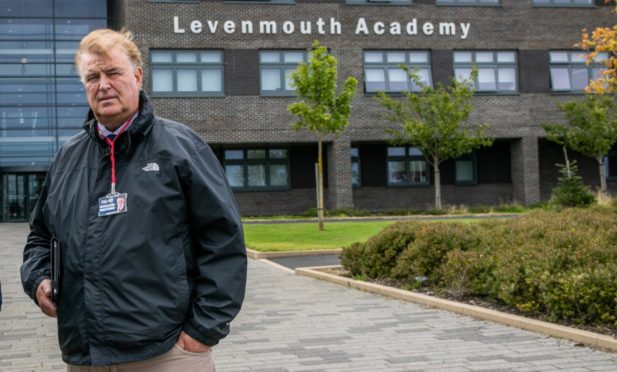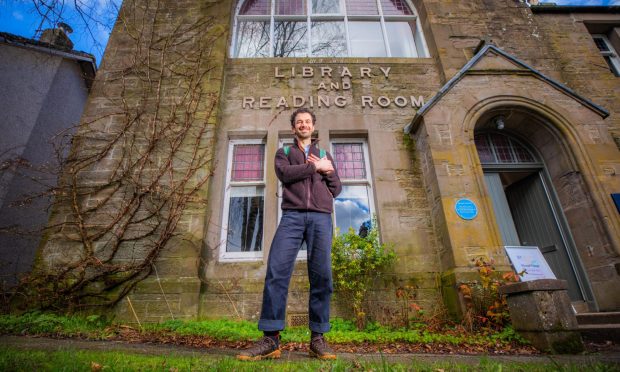Thousands of ‘cast adrift’ youngsters who have done no remote learning may never return to schools across Scotland, a Fife councillor has warned.
Colin Davidson, a teacher and former teaching union leader, fears that some S4 leavers have already switched off from school and will stay away without gaining any qualifications.
His warning came as figures emerged showing a significant number of pupils not participating in online learning, despite efforts by schools and provision of thousands of devices across the region.
And he said these showed that investment must be made now to create training and employment opportunities to offer these youngsters a future.
Engagement levels
While all Fife secondary schools said at least half of their pupils were engaging with remote learning during January, only 55% reported that over three-quarters were engaging.
Mr Davidson, a former president of the Educational Institute of Scotland’s Fife association, said hundreds of 15 and 16-year-olds in Fife and thousands across Scotland who planned to leave this summer were unlikely to return to classes.
Although a phased return to schools is intended from February 22, it is likely to be March at least before most pupils are back, with just a few weeks left of school for leavers.
The Labour councillor for Leven, Kennoway and Largo said: “The government seems to think all these kids will be going back to school after February but there are large numbers of kids just won’t go back.
“They have been told they will be graded on coursework but if they haven’t been engaging they don’t have coursework.
They have voted with their feet, they are not coming back. So what are we going to do for them?”
Councillor Colin Davidson
“They have voted with their feet, they are not coming back. So what are we going to do for them?”
Youngsters in the most deprived areas were likely to be worst affected, said Mr Davidson, like those in his own ward who go to Levenmouth Academy. More than half of the Buckhaven school’s pupils come from some of the most deprived areas in the country.
According to Scottish Government data 12% of pupils left after fourth-year in 2019 and 11% of those S4 leavers were recorded as unemployed or circumstances unknown. Just over a half went into further education and a quarter into jobs.
Apprenticeships
Many more Modern Apprenticeships must be created, Mr Davidson said, as well as training and skills development opportunities for S4 leavers during the pandemic who may have not a single qualification to their name.
“If we put resources in now we can give these kids a future,” he said.
“They are going to need work experience placements, job creation schemes, they will need to get the practical skills to get them into the workplace.
“If we are offering Modern Apprenticeships at a rate of 50 or 60 we need to be offering them in the hundreds.
“If there are opportunities for work placements, we need to be developing these now.”
How many pupils are learning at home?
Other figures collated by Fife Council for remote learning in January show:
- In 33% of secondary schools engagement was over 90%;
- Engagement in 55% of secondary schools was over 75%;
- In 53% of primary schools more than 90% of pupils were engaging;
- Engagement in 91% of primary schools was over 75%.
A briefing to councillors from the council’s education service said that “considerable progress” had been made in remote learning in all schools since last year’s closures.
Staff training, more IT devices and consultation with families, it said, had enabled schools to tailor approaches to suit their pupils, and schools were following guidance to ensure high-quality remote learning and that professional learning.
Digital support continued to be provided to families and staff to ensure access to remote learning.
‘Positive picture’
Head of education and children’s services Shelagh McLean said that the picture across Fife in terms of remote learning is a positive one.
She added: “All of our schools are monitoring how pupils are engaging with their learning at home and providing targeted support where it’s needed most.
“Schools are working hard to make sure pupils are completing all the work that’s necessary for their qualifications and robust processes are in place to help and support young people who are having difficulties.”
Young person’s guarantee
The Scottish Government’s Young Person’s Guarantee aims to give every young person a chance.
A spokesman said: “We recognise the disproportionate impact the pandemic is having on young people through no fault of their own.
“In order to support young people at this time we have launched a Young Person’s Guarantee with the ambition that, within two years, every person aged between 16 and 24 will have the opportunity to study, take up an apprenticeship, job or work experience, or participate in formal volunteering.
“Young people can also choose from a much broader range of pathways than before and there has been a year on year increase in the number of school leavers attaining vocational qualifications at SCQF 5 [National 5] and above, including a significant expansion of foundation apprenticeships which have a strong focus on work experience.
“Our £45 million package of support will help local authorities to provide support to schools and families as they deal with the challenges of remote learning during lockdown including additional digital devices and data packages, and additional staff required to support education recovery.”










